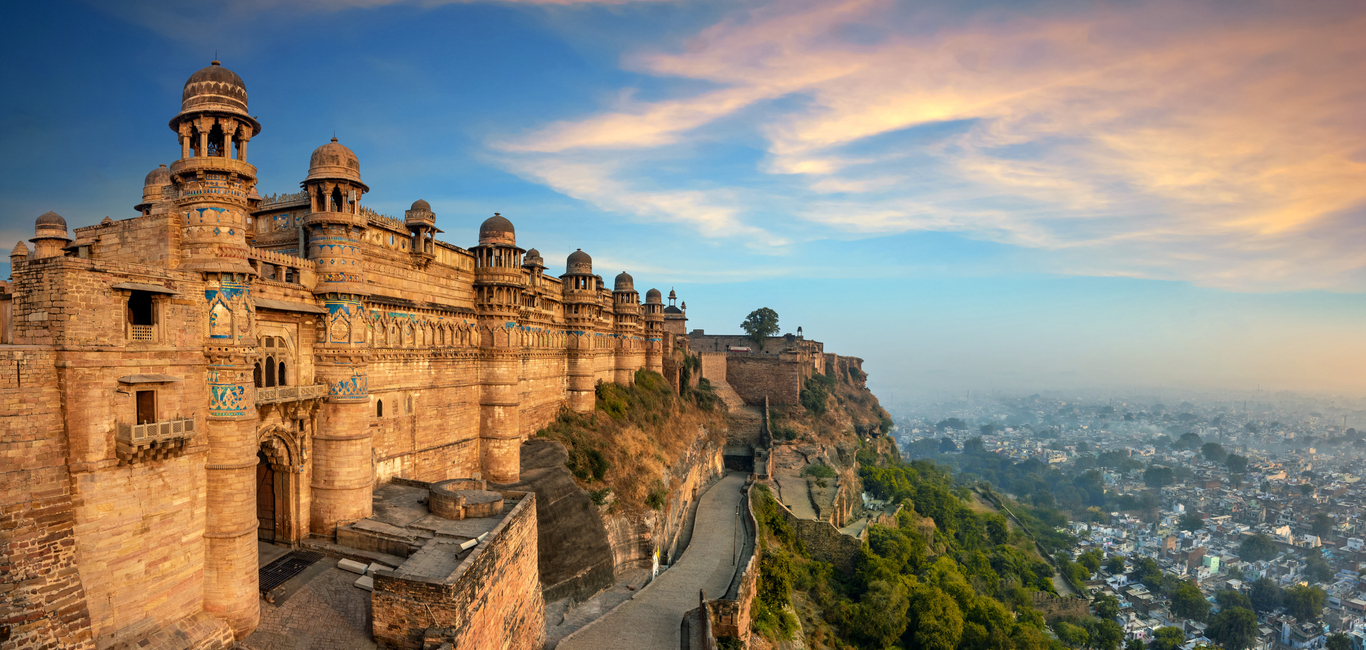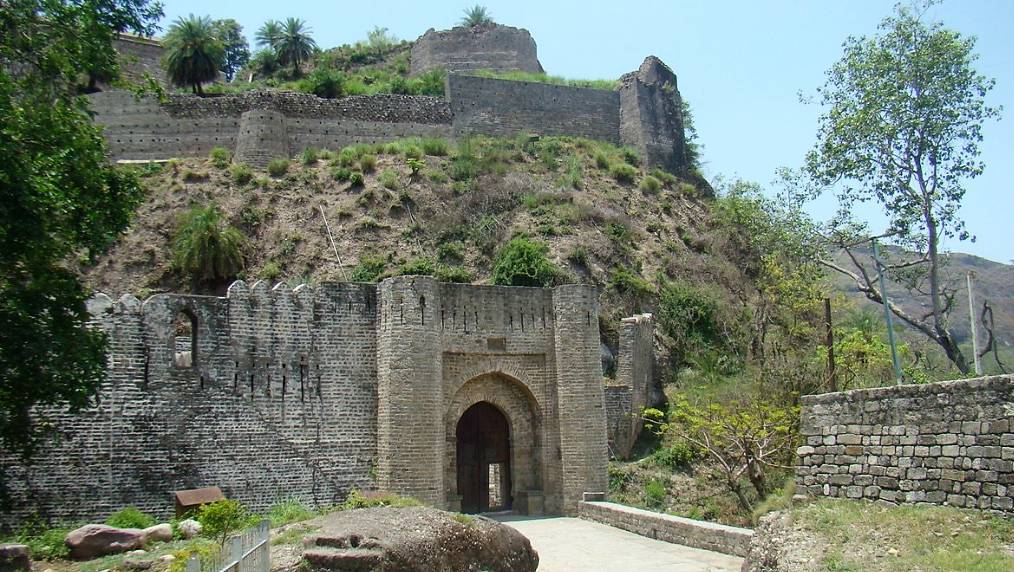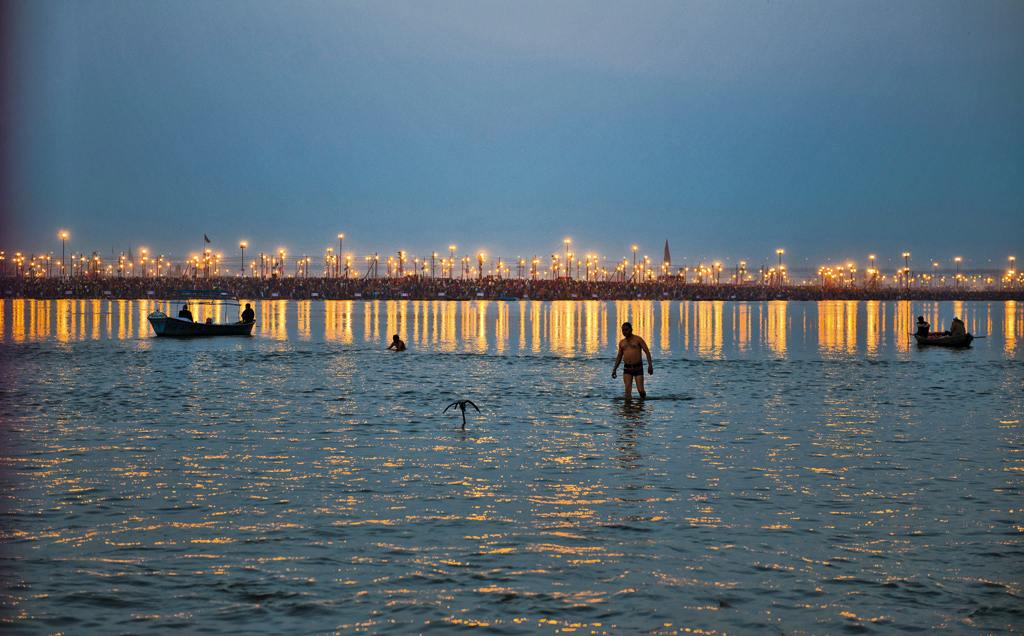 The Yamuna, which is the principal tributary of the Ganges, runs almost 1400 km through the states of Uttaranchal, Himachal Pradesh, Haryana, Delhi, and Uttar Pradesh, before it meets the Ganges at Allahabad. It also creates physical state borders between Himachal Pradesh and Uttaranchal and further down, between Haryana and Uttar Pradesh. Along with its tributaries, it forms the highly fertile Indo- Gangetic plain, which supports almost 57 million people, making it one of the most populated regions in the world. The Yamuna alone is responsible for more than 70 percent of the water supply in the National Capital Region.
The Yamuna, which is the principal tributary of the Ganges, runs almost 1400 km through the states of Uttaranchal, Himachal Pradesh, Haryana, Delhi, and Uttar Pradesh, before it meets the Ganges at Allahabad. It also creates physical state borders between Himachal Pradesh and Uttaranchal and further down, between Haryana and Uttar Pradesh. Along with its tributaries, it forms the highly fertile Indo- Gangetic plain, which supports almost 57 million people, making it one of the most populated regions in the world. The Yamuna alone is responsible for more than 70 percent of the water supply in the National Capital Region.
While the Ganges has always been associated with benevolence and redemption, the Yamuna, her geographical twin, which rises close to the same glacial source has rather uncanny associations with death.
According to legend, Yama (the god of death) and Yami (Yamuna) were twins born to Surya (the sun god) and Samjna (consciousness). The identity of Yamuna as Yama’s twin in some religious texts and as his life-partner in others continues intermittently throughout Vedic literature. References can be found in the tenth book of the Rig Veda, where Yami desires Yama and begs him to yield to her. However, Yama remains adamant in his refusal. Despite this confusion, being associated with Yama gave the Yamuna the power to grant a kindly death. On the day of Bhratridwitiya (during Diwali) sisters pray to Yama and Yamuna for the long and prosperous lives of their brothers.
A Brahmanic tale narrates that Yama was the first mortal to die, leaving behind a disconsolate Yami. During the early stages of creation, the concept of the night did not exist and the days ran into each other as one continuous stretch. Because of this, it became extremely difficult for Yami to accept her loss, as time seemed to stand still. The gods were worried about Yami’s condition and decided to intervene. They created the night and it was decided that darkness would envelop the earth between the time of Yama’s death and Yami’s notion of the present moment, which was stagnant. As darkness broke the monotony of continuous daylight, it helped lessen Yami’s grief and eventually enabled her to distance herself from the death of her partner.
Another story narrates how the Yamuna came to be named. Unable to tolerate the brilliance and heat that her husband Surya emanated, Samjna would shut her eyes in his presence. The sun god was greatly annoyed by his wife’s behavior and chided her. Although Samjna tried to keep her eyes open, her best efforts failed, as the radiance made her eyes water. Surya told his wife that since her eyes fluttered in his presence, the daughter born to them would be wayward and would be called the Yamuna. However, he assured her that the Yamuna would be worshipped as a goddess. The waywardness of the river is borne by the fact that the Yamunotri temple in Uttaranchal (the principal shrine of the goddess) has to be repaired every few years due to the destruction caused by avalanches and landslides.
Most casual travelers and pilgrims consider Yamunotri to be the source of the Yamuna. However, this is far from accurate for the geographical source of the river is Saptarishi Kund, a glacial lake above Yamunotri. Blocked by snow for most of the year, it is accessible only to experienced trekkers. The lake derives its name from the seven great sages who lived here and performed great penances.
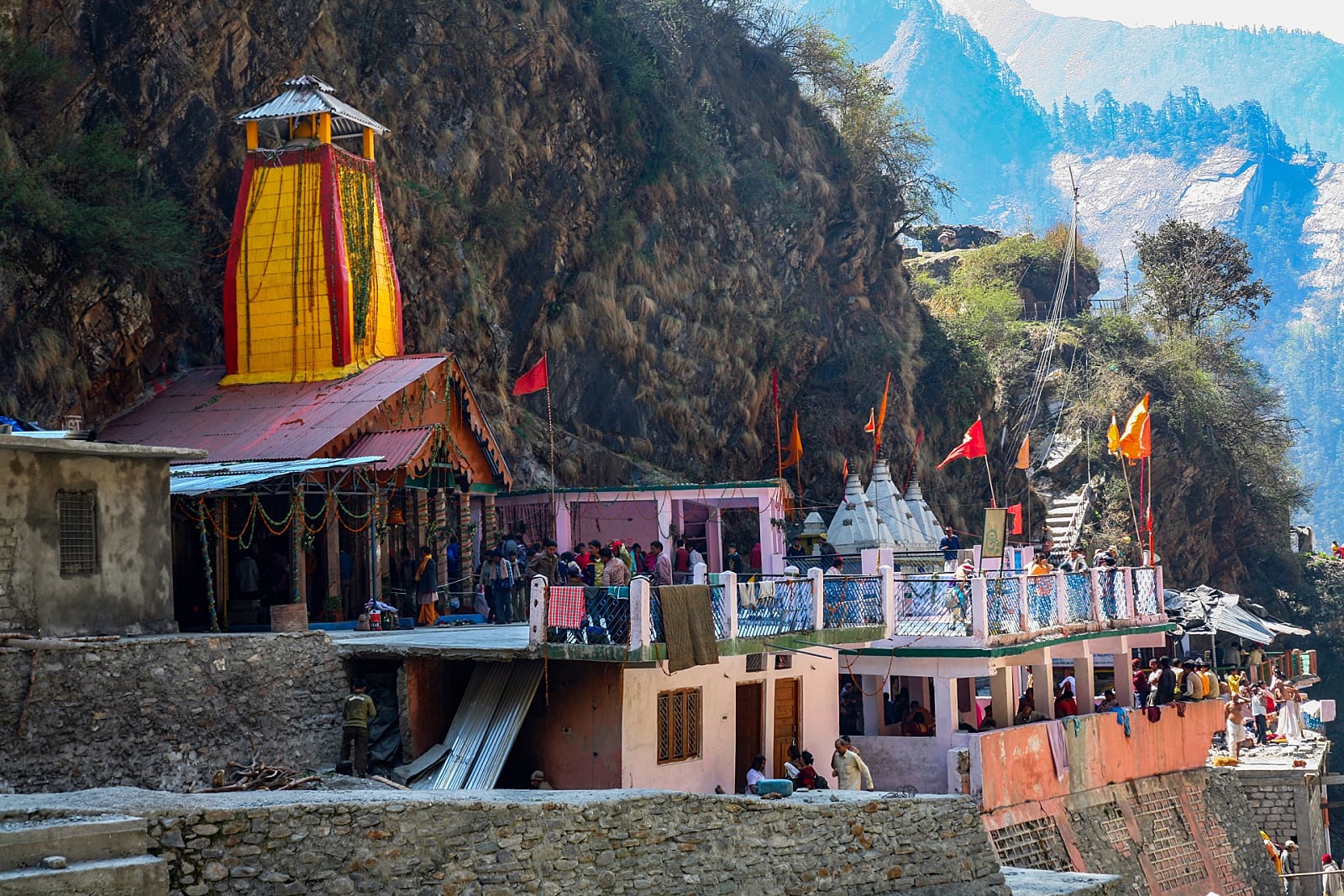 To reach Yamunotri, one has to first reach the quaint village of Janki Chatti, (approximately 90 km from Rishikesh.) From Janki Chatti, a steep 5 km trek along the feeder streams of the Yamuna leads to a ridge below the shrine. The gradient gradually reduces and the path opens out to a semicircular gorge above which the Yamuna begins her descent. From here, it is an easy ramble across a rusted bridge to the temple. The escarpment above the gorge has been decapitated to provide space for ever-proliferating hotels and dharamshalas. The far side of the gorge below the escarpment is full of natural chimneys that spew hot water and steam from geothermal springs, creating a blanket of mist. A careful glance through this camouflage exposes how apathy and a lack of civic sense can destroy a river. Mineral water bottles and plastic bags float downstream, trying hard to make their escape into the plains where environmentalists can discuss them at length.
To reach Yamunotri, one has to first reach the quaint village of Janki Chatti, (approximately 90 km from Rishikesh.) From Janki Chatti, a steep 5 km trek along the feeder streams of the Yamuna leads to a ridge below the shrine. The gradient gradually reduces and the path opens out to a semicircular gorge above which the Yamuna begins her descent. From here, it is an easy ramble across a rusted bridge to the temple. The escarpment above the gorge has been decapitated to provide space for ever-proliferating hotels and dharamshalas. The far side of the gorge below the escarpment is full of natural chimneys that spew hot water and steam from geothermal springs, creating a blanket of mist. A careful glance through this camouflage exposes how apathy and a lack of civic sense can destroy a river. Mineral water bottles and plastic bags float downstream, trying hard to make their escape into the plains where environmentalists can discuss them at length.
The temple itself is a modest structure overlooking the gorge, surrounded by the usual plethora of shops that cater to pilgrims. Just below the temple is a tank where water from the hot spring is mixed with cold water to facilitate bathing. Water temperature in the smaller tank near the sanctum exceeds 70 degrees centigrade rice and lentils cooked here are offered to the pilgrims as prasad.
From Yamunotri, the river flows for about 200 km cutting across the Shivalik Range in the lower Himalayas, where it is dammed. The Assan Barrage on the Uttaranchal-Himachal border in the Doon Valley is situated at the confluence of the Yamuna Canal and the Assan River. This man-made wetland also supports a bird sanctuary. From here, the Yamuna flows towards Paonta Sahib, an important center of the Sikh pilgrimage. In 1685, Guru Govind Singh established a new township here after his return from Nahan. A fort-like structure was constructed on the banks of the river, part of which houses the gurudwara and a museum. Weapons used by Guru Gobind Singh during his stay here are on display.
The Yamuna then enters the Yamuna Nagar district of Haryana where the Tajewala Dam splits it into two channels, the Western Yamuna Canal (WYC) and the Eastern Yamuna Canal (EYC). The latter irrigates the states of Haryana and Uttar Pradesh, while the former crosses Yamuna Nagar, Karnal, and Panipat before reaching the Haiderpur treatment plant, which supplies potable water to the NCR region.
 Palla Village, 15 km upstream of Wazirabad Barrage (the reservoir for Delhi) is where the Yamuna enters the capital. Although the National Capital Region is the major source of contaminants, Yamuna’s tryst with pollution starts further upstream. There is a parallel channel from Tajewala, which receives both domestic and industrial waste. Sometimes when excess water from the WYC is let into it, the overflow causes pollutants to enter the clean water channel downstream at Karnal. Thus, there is a sudden increase in the pollution levels at the Haiderpur treatment plant a few times annually. Although organic waste can be treated effectively, removing traces of pesticides and fertilizers through conventional methods is not possible.
Palla Village, 15 km upstream of Wazirabad Barrage (the reservoir for Delhi) is where the Yamuna enters the capital. Although the National Capital Region is the major source of contaminants, Yamuna’s tryst with pollution starts further upstream. There is a parallel channel from Tajewala, which receives both domestic and industrial waste. Sometimes when excess water from the WYC is let into it, the overflow causes pollutants to enter the clean water channel downstream at Karnal. Thus, there is a sudden increase in the pollution levels at the Haiderpur treatment plant a few times annually. Although organic waste can be treated effectively, removing traces of pesticides and fertilizers through conventional methods is not possible.
This only constitutes a minor threat to the Yamuna’s riverine ecology when compared to the level of contamination that Delhi, the biggest culprit, generates. The National Capital produces 1,900 mld of sewage, against an installed wastewater treatment capacity of 1,270 mld. Thus, almost 630 mld of untreated or partially treated sewage enters the river every day. The Wazirabad Barrage releases very little water in the dry months and only effluents flow downstream.
The Agra Canal splits from the Yamuna at the Okhla Barrage, which is the exit point for the river in Delhi. During the summer months, practically no potable water is released from here; instead, discharge from the Shahdara drain joins the river downstream carrying effluents from east Delhi and Noida. This is the second-largest polluter of the river after the Najafgarh drain. Today, the municipal water supply in the NCR is so polluted that it is impossible to drink it without secondary filtration. But this only takes care of organic waste; the chemical residue remains intact. While this may not pose a major problem for those who can afford bottled water, it is the less fortunate who suffer. The region is facing an acute water crisis with soaring costs to public health due to pollution and water-borne diseases. Lopsided Government policies on the water are also responsible for the crisis. In India, potable water is almost free, and this results in tremendous amounts of wastage.
After Delhi, the Yamuna is reduced to a drain for most of the year. The almost lifeless river slowly meanders towards the twin towns of Vrindavan and Mathura, which are famous for their association with the Hindu god Krishna. Mathura is a site of great antiquity. By the 5th century BC (during Buddha’s time), it was a major metropolis and capital of the Surasena Kingdom. The town continued to prosper under the reign of the Kushanas and remained a center of power during the Mauryan period from 3 century BC to 4th century AD. By the time Mahmud of Ghazni arrived in 1071 to play his favorite sport of pillage, Buddhism had completely disappeared from this region. Sikandar Lodi did further damage to the shrines of Mathura in 1500. The town regained its prominence under the auspices of the tolerant Akbar and Jehangir, only to be destroyed by Aurangzeb again.
According to legend, Mathura is the birthplace of Lord Krishna. Today, this little town is still redolent with the legends and music of the frivolous flutist.
As soon as one enters the over-congested town, the significance of Krishna in the lives of locals becomes evident. Calendar images of the godchild are plastered on virtually every surface. Walking through the narrow streets is a rather eerie experience with a million Krishnas watching you. Pilgrims, amateur flutists, overfed cattle, and cycle rickshaws share the street with little or no malice. Wayside shrines and sweet shops block pedestrian paths; the latter try their very best to ensure that the pundits maintain their full-figured appearance. In the morning, the combined throngs seem to have a singular agenda and they all Converge at the riverfront.
A broken path through a dilapidated archway descends to the bathing ghats where hundreds of pilgrims congregate to seek Yamuna and Surya’s blessings. Chirpy young women selling floral tributes and monkeys hoping to snatch a meal block the edges of the path. Pundits and astrologers sit on raised platforms in the arcaded colonnades waiting patiently for customers.
A long line of picturesque ghats adorns the riverfront. Painted by the sun’s gloaming brush, arched gateways and temple spires are reflected in the calm waters of the Yamuna. The peal of temple bells echo across the ghats; ill-tempered bulls bellow and harassed pilgrims grumble while Krishna bhajans are doled out through loudspeakers. Only the women bathing discreetly in their saris are oblivious to everything. They dream of their doe-eyed god and know that he will blind any mischievous sprite that dares gawk at them.
Vrindavan, a village 10 km north of Mathura (once noted for its fragrant groves) is where Krishna spent an exciting youth. While he spent much of his time vanquishing demons, he was legendary for his ability to mesmerize the village belles with the music of his flute. He also regularly hid their clothes while they bathed in the Yamuna-an activity that made him a hero in the eyes of most young men.
There are two overgrown gardens in Vrindavan: Seva Kunj and Nidhi Van. While the former is believed to be the place where Krishna and his female companions indulged in mortal pleasure, the latter is where they rested.
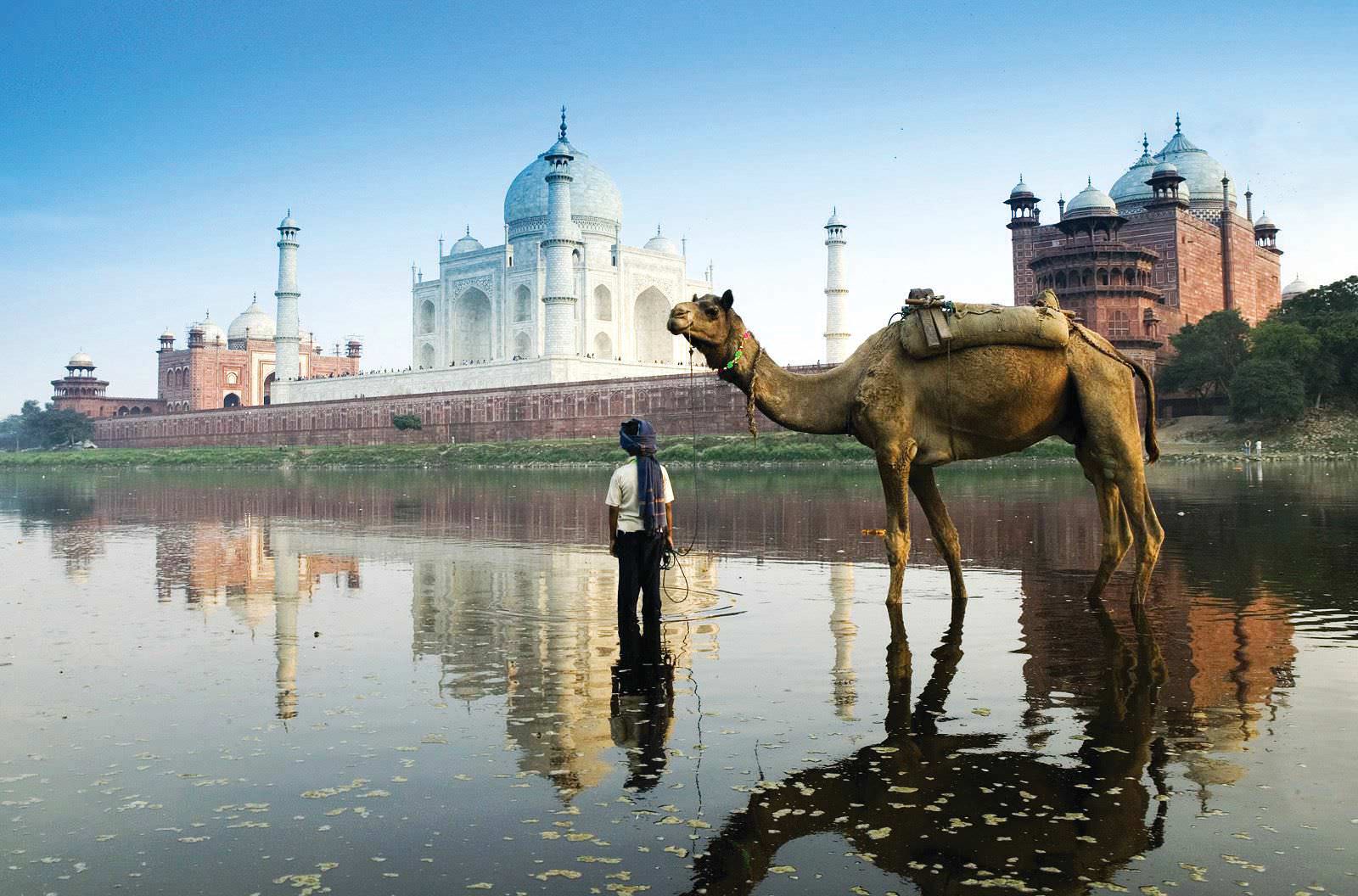 But look beyond the edifice and the callousness of the local administration becomes evident; Agra is one of the most polluted towns in Uttar Pradesh. One only has to walk behind the monument (along the Yamuna) to see how farcical the measures to curb pollution have been. While the state of the art dustbins has been installed on the premises of the Taj, with ominous signs that ensure non-littering, very few know that garbage is dumped regularly behind the monument. The level of pollution is so high, that fish kills along this stretch of the river are a regular occurrence.
But look beyond the edifice and the callousness of the local administration becomes evident; Agra is one of the most polluted towns in Uttar Pradesh. One only has to walk behind the monument (along the Yamuna) to see how farcical the measures to curb pollution have been. While the state of the art dustbins has been installed on the premises of the Taj, with ominous signs that ensure non-littering, very few know that garbage is dumped regularly behind the monument. The level of pollution is so high, that fish kills along this stretch of the river are a regular occurrence.
The Yamuna merges with the Ganges at Prayag, which is one of the most famous Hindu pilgrimage towns in India. In 1583, the Mughal Emperor Akbar renamed the city Allahabad. Incidentally, the ‘Allah’ in the name does not signify god in Islam. The usage of the word comes from Din-llahi-the syncretic religion Akbar experimented with. Hindus believe that Brahma offered his first sacrifice here after creating the universe.
Allahabad enjoys a position of great prominence in Hindu religion and mythology, as it is situated at the confluence of the Ganges and Yamuna. Hindus also believe that the River Saraswati has managed to escape extinction by descending vertically through a subterranean passage and joining her sacred sisters here.
In the medieval period, as the neighboring Sharqi Dynasty of Jaunpur witnessed a fluctuation in its political fortunes, Allahabad gradually rose in importance and acquired the status of a Mughal Suba (state). Acknowledging the immense navigational potential of its rivers and the entrepreneurial importance of the city as a center for boat-making, Akbar built a fort here, overlooking the Yamuna. Today, only flat-bottomed riverboats ferrying pilgrims ply on this stretch and the fort is now an army garrison. The confluence of the Ganges, Yamuna, and now extinct Saraswati is called the Sangam and is the holiest spot in Allahabad. Temporary platforms are erected for the hundreds of pilgrims who come every day to offer prayers. During the Kumbh Mela, this number can swell to millions.
In theory, the Yamuna ends her journey here; but ask any In pilgrim and he will beg to differ, for the Yamuna just pauses here before accompanying the Ganges on a long journey to the sea.


